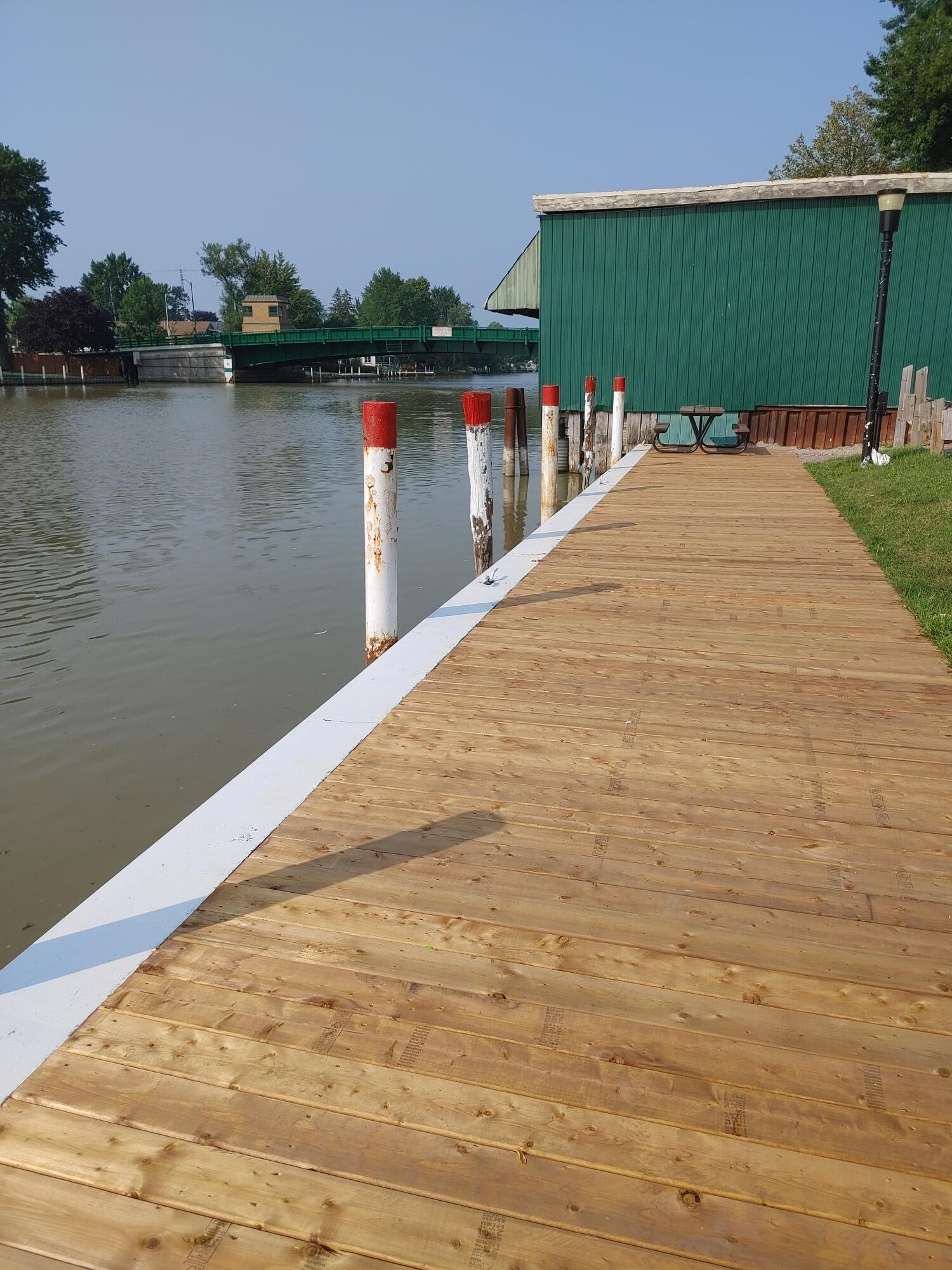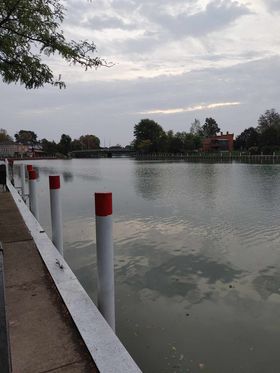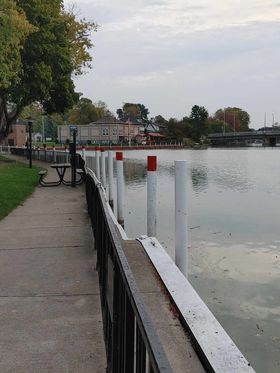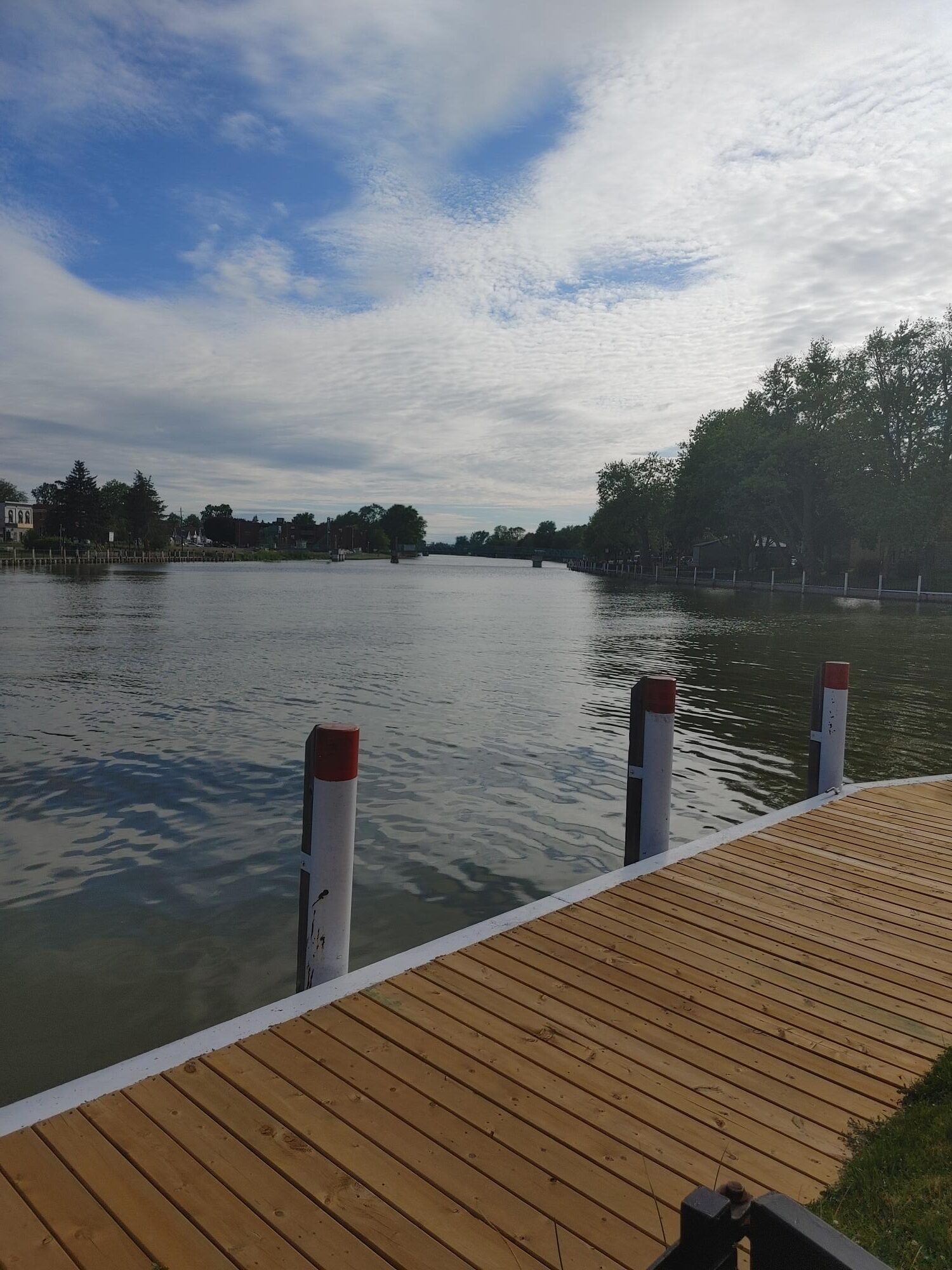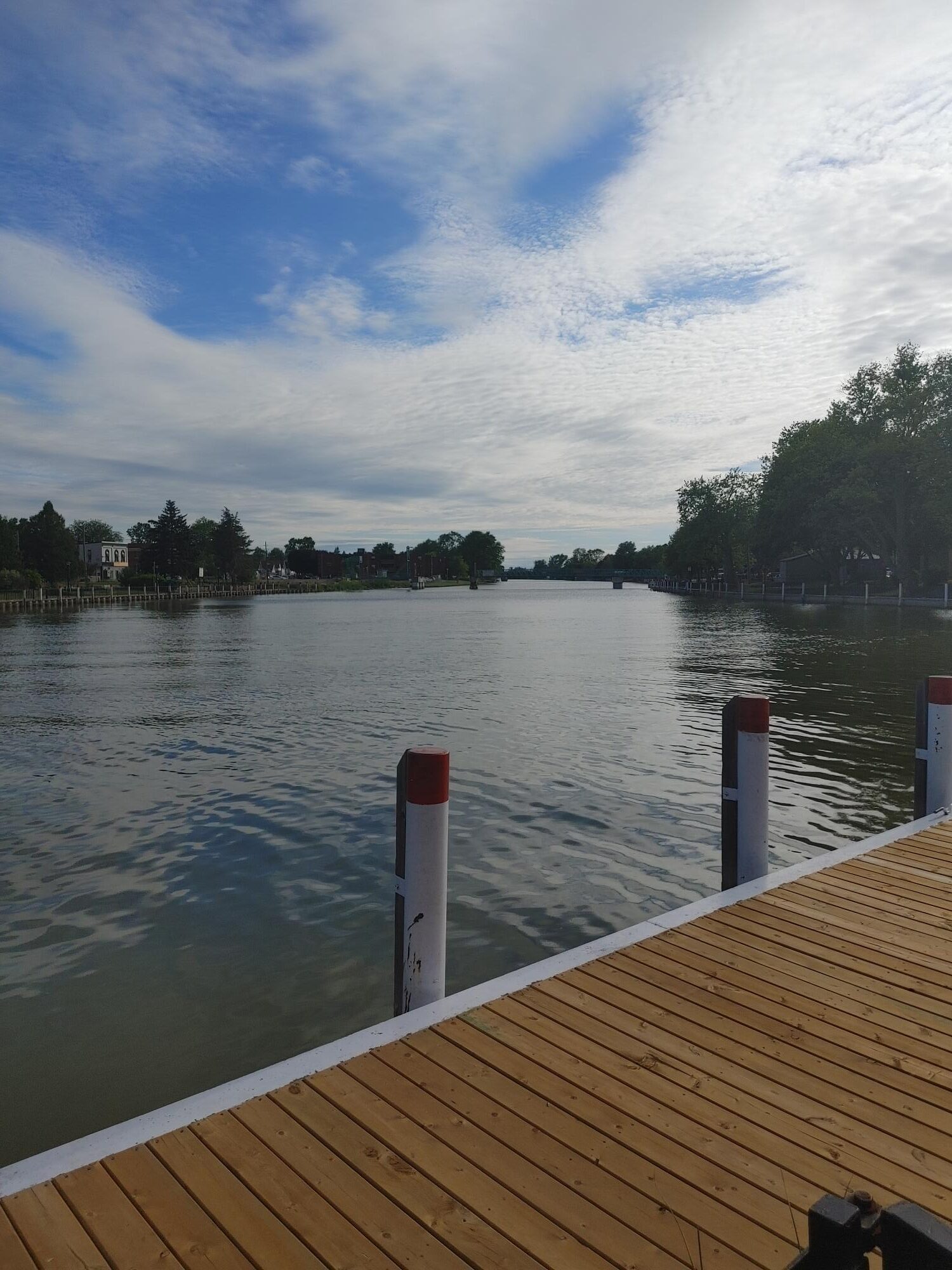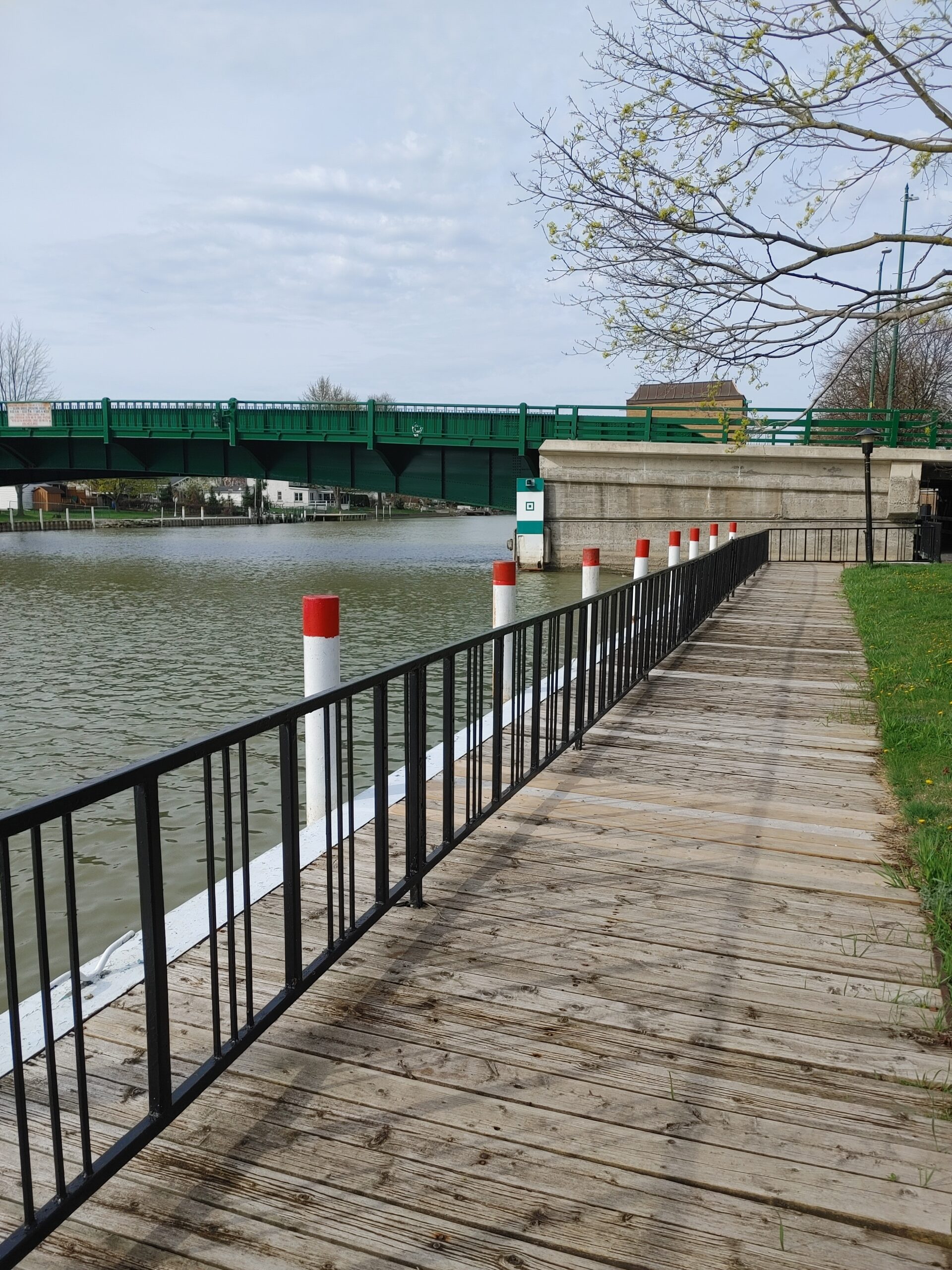The Sydenham River provided this area with a natural deep water shipping port and along with an abundance of hardwood forests along its route, it was an ideal location to build a settlement. The “forks” which was the location where the north and east branch joined together, was an excellent settlement site. The first official residence was Laughlin McDougall who purchased lot 13, con. 2 of Chatham Gore soon after the area was opened up for settlement in 1822. This was located at the present site of the Wallaceburg Legion, branch 18. Here he built a multi purpose building which served as a residence, tavern and trading post. Others soon moved to the area and land was cleared, ships were built and the lumber industry took hold. Several industries were started which took advantage of all this area had to offer. Wood was harvested from points upstream and floated down the rivers to the forks where it fed the numerous lumber mills, the Steinhoff and Gordon Stave mill and local ship builders. Soon, the river was busy with ships of all types and sizes, carrying people and goods to and from this community. In 1834, the first Post Office was started by Hugh McCallum and given the name, Wallaceburg. In 1874, Wallaceburg became a village and in 1896, it was a town.
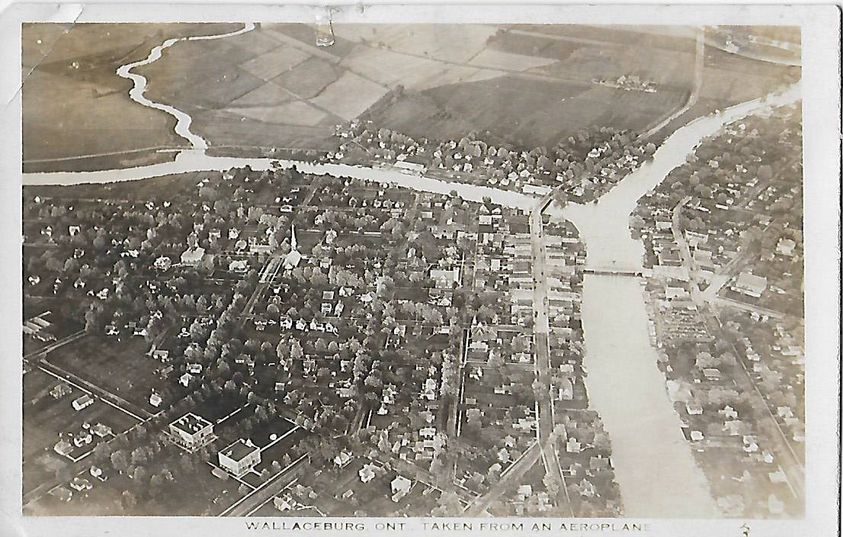
The early years of Wallaceburg, focused on river access as this was at the time the easiest means to get around and to bring lumber in to be processed. Most of the new construction was built around the “fork” of the river with ferry service used to get across the north branch and the main branch. In the 1870’s, bridges were built to connect west to east and north to south (Dundas Bridge and Central Bridge). These were both of similar design which turned in the center to allow boats to pass and were built of wood. These would soon be replaced by steel bridges and then steel and concrete. The Lord Selkirk Bridge (1950) and Murray Street bridges (1974) were added in the later years as the town continued to grow.
Along with the lumber industry came the need for ships, mills and other industries that made use of the wood itself or shipped it out to other parts of the world. The first major industry to make use of the wood for export purposes was Steinhoff and Gordon’s Stave Mill, located where the Fiddler’s Green apartments and the High Rise stand today. Here they produced staves and hoops used to make barrels of different sizes and uses.
Lumber mills were located where Harbour Court now sits as well as on the north branch on the east bank north of Park Street. Here logs were cut into useful sizes to feed the building boom of the early 1900’s. Coal and sand were also stockpiled to make available for local use.
As the lumber industry waned before the turn of the century, new ventures were started to continue the industrial boom. The Glass Factory (1894), The Wallaceburg Sugar Company (1903), The Wallaceburg Brass (1905) and Benn Iron Company (1933) were just a few early companies that made a huge contribution to Wallaceburg’s diverse manufacturing history and made use of the local waterways to bring in raw materials and to ship out their finished products.
A government wharf and warehouse existed on the south side of the river at Superior Park. Here, large ships, some up to 220 feet long would dock to load or unload their cargo. By the early 1900’s, several large ships and passenger vessels made their way to Wallaceburg every day.
Shipbuilding was another industry that thrived during these early years with facilities located at Civic Square Park and the north end of Albert St. to name a few. Many large vessels were built for local businesses to carry goods and people to ports around the great lakes and beyond.
The Premier Electric Light Company built a power plant in the 1890’s to supply the town with electricity using coal fired steam generators. This was located on the river, north of Elgin Street. This plant would shut down in 1915 when Wallaceburg Hydro began operations with Ontario Hydro power generated from Niagara Falls.
The downtown area’s north and south sides of the river grew quickly with 2 and 3 story building blocks lining the waterfront on James Street and Wallace Street. Many of these old buildings still stand today, including the Carnegie Library, Tecumseh Hotel, the I. O. O. F block and Shaw Block. Others have passed from history, such as Stonehouse Block, The Beattie Block and several hotels that lined Wallace Street.
Today, the waterfront is a mix of old and new as well as empty lots waiting for future development. The Sydenham River is no longer crowded with large ships, but remains a focal point of the community. Several events take place each year to draw crowds to the waterfront and the calm waters bring boats, canoes and kayaks out to enjoy the waterways scenic and peaceful beauty.
For more information on the history of the local waterways and the people and businesses that took advantage of this natural commodity, visit the Wallaceburg and District Museum, just a stones throw south of the Sydenham River at 505 King Street.
*Written by Henry Van Haren
*Photos courtesy of Sherri-Anne Wills

